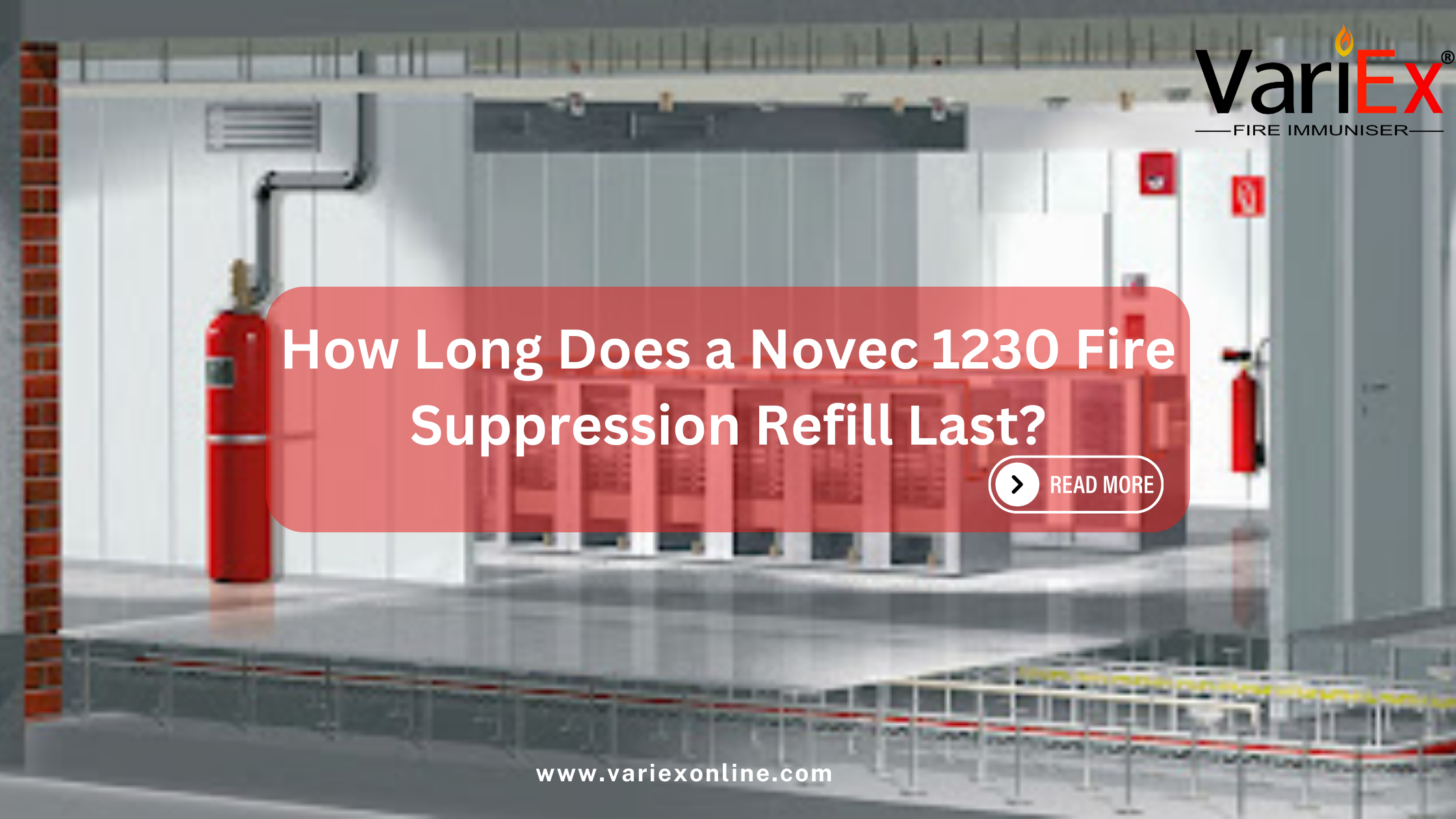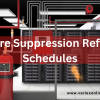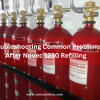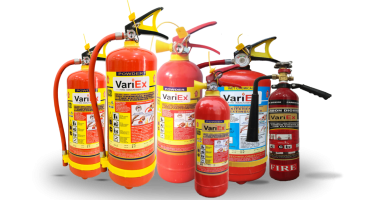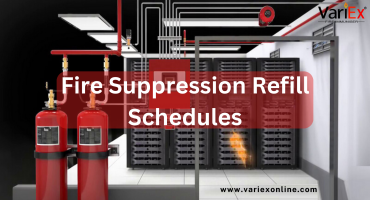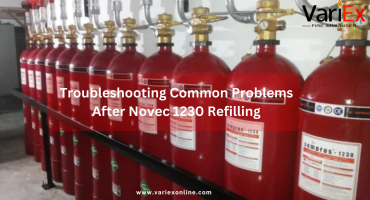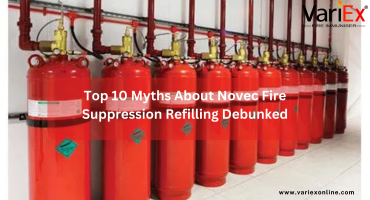![]()
Fire Immuniser
+91-7829629111
Email: info@variex.in
Varistor Technologies Pvt. Ltd.
Block-1, First Floor, Ardente Office One, Hoodi Circle, ITPL Main Road, Bengaluru, Karnataka 560048, IN
How Long Does a Novec 1230 Fire Suppression Refill Last?
How Long Does a Novec 1230 Fire Suppression Refill Last?
Novec 1230 is one of the most effective clean agent fire suppression systems available today. It is widely used in data centers, server rooms, museums, and other critical facilities where water-based fire suppression is not an option. However, one of the most common concerns for users is understanding how long a Novec 1230 refill lasts and when it needs to be replaced.
This article provides a detailed insight into the factors affecting the lifespan of Novec 1230 refills, maintenance requirements, cost considerations, and compliance regulations.
Understanding Novec 1230 Fire Suppression System
What is Novec 1230?
Novec 1230 is a clean, non-toxic, and non-conductive fire suppression agent designed to extinguish fires without damaging sensitive equipment. It is stored as a liquid and discharged as a gas, making it effective for fire suppression in enclosed spaces.
How Does Novec 1230 Work?
It absorbs heat, disrupting the combustion process.
Leaves no residue, ensuring no damage to electronics or documents.
Extinguishes fire within seconds without oxygen depletion, making it safe for occupied areas.
Key Applications of Novec 1230
Data centers and server rooms
Museums and archives
Aircraft and marine applications
Healthcare facilities
Factors Affecting Novec 1230 Fire Suppression Refill Duration
Several factors determine how long a Novec 1230 refill lasts before requiring replacement:
Frequency of System Discharges
If the system is activated frequently, refills will be required more often.
Unused systems can maintain their charge for years.
Storage Conditions
Proper storage in a controlled environment ensures longevity.
Temperature fluctuations can impact the agent’s effectiveness.
Maintenance and Inspection
Regular system inspections help detect leaks and pressure drops.
Annual maintenance ensures the agent remains effective.
System Integrity
Corrosion or damage to the storage cylinder can lead to leaks.
Ensuring proper sealing prevents premature refills.
Average Lifespan of a Novec 1230 Fire Suppression Refill
Manufacturer Guidelines
Most manufacturers specify that Novec 1230 remains stable and effective for up to 10 years if the system is not discharged and is well-maintained.
Industry Standards and Regulations
NFPA 2001 (Standard on Clean Agent Fire Extinguishing Systems) mandates regular inspections.
ISO 14520 also outlines guidelines for gaseous fire suppression systems.
Practical Examples
In a data center with minimal discharges, refills may only be needed every 10–15 years.
In an industrial setting with frequent system activations, refills may be required annually.
When Should You Refill Novec 1230?
Signs That Indicate a Need for a Refill
Pressure gauge readings show a drop.
A system discharge has occurred.
Routine inspection reveals leaks or component failure.
How Often Should Inspections Be Performed?
Monthly visual inspections for pressure levels.
Annual professional inspections as per NFPA guidelines.
Refill required after any discharge.
Compliance with Fire Safety Codes
Local regulations may mandate a refill after a set period, even if unused.
Ensure refills are conducted by certified professionals.
Storage and Maintenance of Novec 1230
Best Practices for Longevity
Store cylinders in a temperature-controlled environment.
Avoid exposure to direct sunlight and extreme temperatures.
Conduct periodic pressure tests.
Impact of Environmental Conditions
Humidity and heat can affect system integrity.
Ensure cylinders are stored upright and secured.
Comparing Novec 1230 to Other Fire Suppression Agents
| Fire Suppression Agent | Lifespan | Environmental Impact | Safety for Humans |
|---|---|---|---|
| Novec 1230 | 10-15 years | Low (GWP = 1) | Safe |
| FM-200 | 10-15 years | Moderate (GWP = 3500) | Safe |
| CO2 Suppression | 10-20 years | Zero GWP | Can be hazardous |
| Water Sprinklers | No expiry | Environmentally friendly | Safe |
Cost of Novec 1230 Refilling
Factors Influencing Cost
Cylinder size and capacity.
Supplier pricing and regional costs.
Service fees for professional refilling.
Estimated Price Range
427 to 1,283 per pound for Novec 1230 agent.
Labor costs for refilling may range from 42,779 to 1,71,117 depending on system size.
Additional Maintenance Expenses
Regular inspections cost between 42,779 to 1,71,117 annually.
Pressure testing and certifications may add additional charges.
Ensuring Compliance with Fire Safety Regulations
Key Regulatory Requirements
NFPA 2001 compliance for clean agent systems.
Local fire safety codes may have specific inspection mandates.
Manufacturer recommendations must be followed for refills.
Why Certified Technicians Are Essential
Ensures proper handling and installation.
Reduces risk of system failure.
Guarantees compliance with legal standards.
Summary Table: How Long Does a Novec 1230 Refill Last?
| Factor | Impact on Refill Longevity |
|---|---|
| Frequency of Discharges | More discharges = More frequent refills |
| Storage Conditions | Proper storage extends lifespan |
| Maintenance Practices | Regular checks ensure longer life |
| Compliance with Regulations | Inspections determine refill need |
| Manufacturer Guidelines | Adhering to specs ensures efficiency |
Conclusion
Novec 1230 is a highly effective fire suppression agent with a lifespan of 10–15 years if stored and maintained correctly. Regular inspections, proper storage, and compliance with industry standards ensure its longevity. While refilling can be costly, it is an essential part of maintaining fire protection systems in critical environments.
By understanding when and how often Novec 1230 refills are needed, businesses can enhance safety, reduce risks, and comply with fire safety regulations.
Frequently Asked Questions
Novec 1230 remains effective for up to 10 years if the system is not discharged. If discharged, a refill is needed immediately.
No, it does not degrade over time if stored properly in a sealed system with no leaks.
A professional inspection and refill are required immediately after discharge to restore the system’s protection.
The cost ranges from 427 to 1,283 per pound, plus labor and service fees, which can range from 42,779 to 1,71,117.
Yes, Novec 1230 has a lower environmental impact (GWP = 1 vs. 3500) and is safer for human exposure.
Final Say
At VariEx.in and VariexOnline.com, we specialize in supplying and installing top-quality fire fighting systems and equipment. From fire extinguishers to advanced suppression systems, we offer comprehensive solutions tailored to your needs. Our experienced team ensures precise installation and maintenance for optimal safety.
Trust VariEx for reliable fire protection. Contact us online or call 7829629111 to learn more.
We specialize in manufacturing, supplying, and distributing a comprehensive range of fire fighting equipment, including state-of-the-art fire extinguishers. Read our most searched blogs and find interesting information on topics such as how to use a fire extinguisher, how to calculate fire fighting water tank capacity, fire extinguisher refilling, obtaining a Fire NOC, understanding fire fighting systems, types of fire protection systems, the fire hydrant system, and the fire sprinkler system. These resources provide essential knowledge for ensuring safety and compliance with fire safety regulations. Additionally, you can explore guides on the maintenance of fire protection equipment, the latest advancements in fire safety technology, and best practices for fire risk assessment and management.
Our expertise extends to fire alarm systems, fire hydrant systems, and fire suppression systems, including fire sprinklers. Each product meets rigorous international standards for reliability and performance, ensuring effective fire safety products tailored to diverse applications and industries. Additionally, we are providing Fire Extinguisher Refilling and AMC services to ensure ongoing maintenance and operational readiness of fire safety equipment.


